AMD Radeon R9 Nano Review
Small, fast and pricey — that’s how AMD wants to establish a whole new product category. But does the Radeon R9 Nano have the performance to back up its price tag?
Results: Metro Last Light And Bioshock Infinite
Metro Last Light
Let’s take a look at a classic game that's so demanding we can't help but retain it as a benchmark. Nvidia’s GeForce GTX 980 comes out ahead in Metro Last Light across all resolutions, including UHD. The Radeon R9 Nano’s performance might not be good enough for a win, but it is ample for playable frame rates at 3840x2160.
Nvidia's GeForce GTX 970 Mini does surprisingly well, beating a factory-overclocked Radeon R9 390X all the way to our highest test resolution. This came as a surprise to us. Old though it may be, Metro just isn't well-optimized on AMD's hardware, it seems. At least the performance we're reporting is playable.
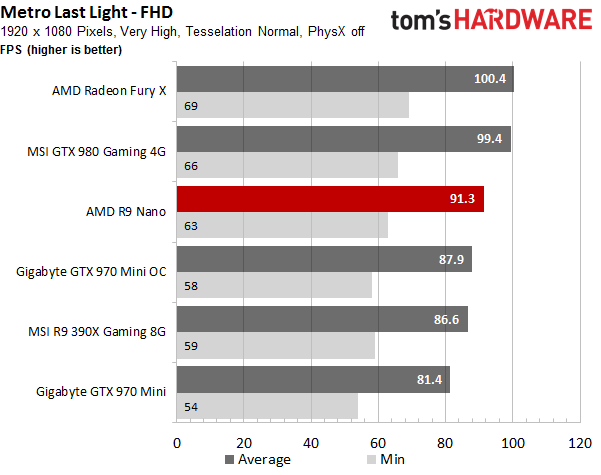
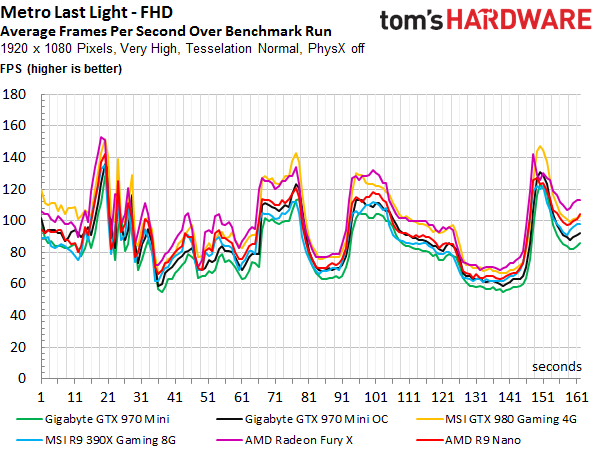


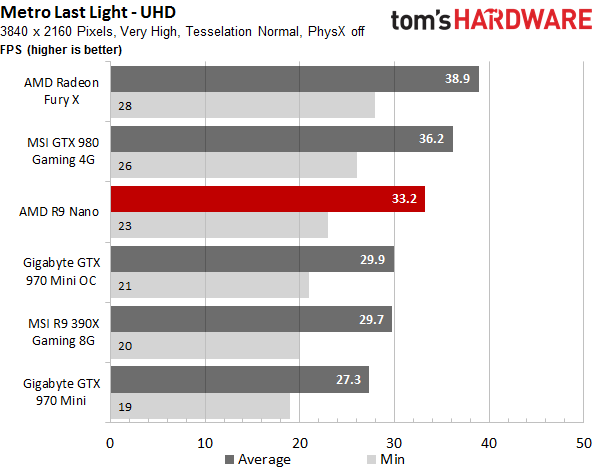
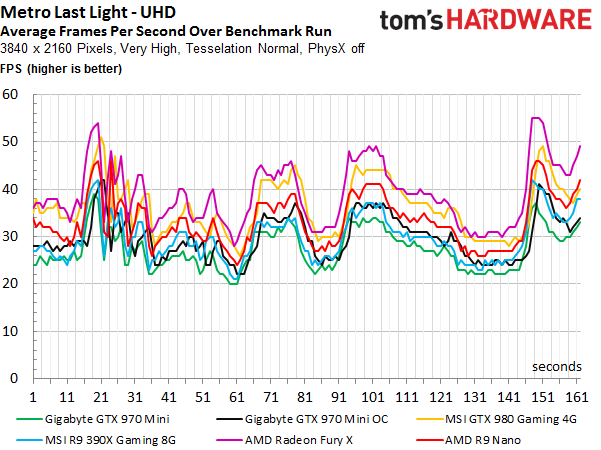
The Radeon R9 Nano’s anything-but-smooth (red) curve at Ultra HD shows the strict power consumption limit in action. AMD's limit results in a varying clock rate, which keeps the card from doing better in this benchmark. The results are still alright, especially when you consider the card's low power consumption.

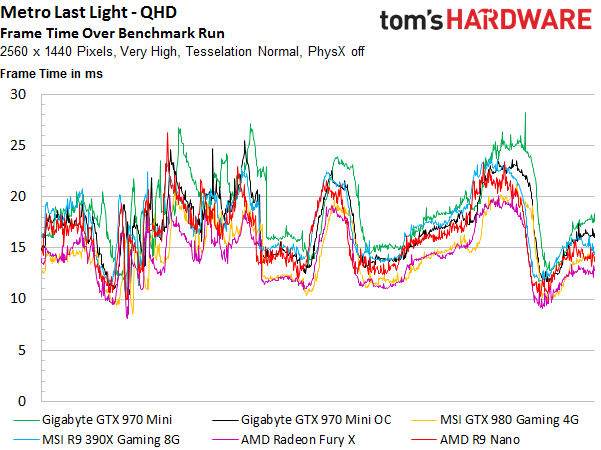

Normalization via the frame time averages doesn’t really show anything new. The different frame render times attributable to a constantly changing core frequency are easy to spot.
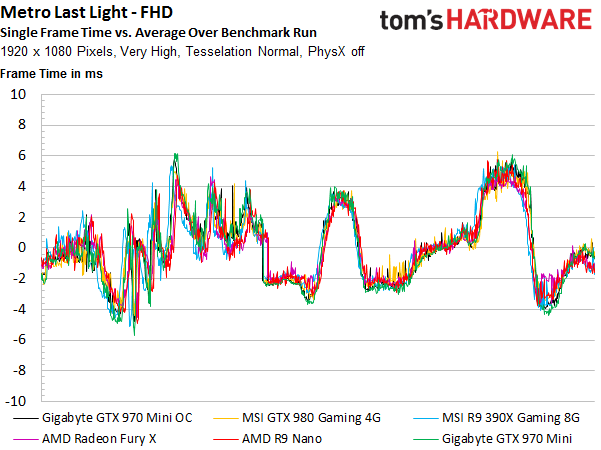
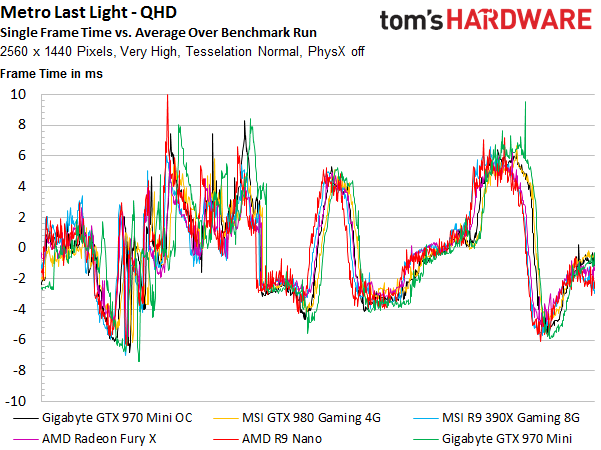

The last graph gives us the bottom line: neither AMD's Radeon R9 Nano nor any other graphics card encounter extreme spikes. They all stay below a calm 5ms of variance between any two frames.

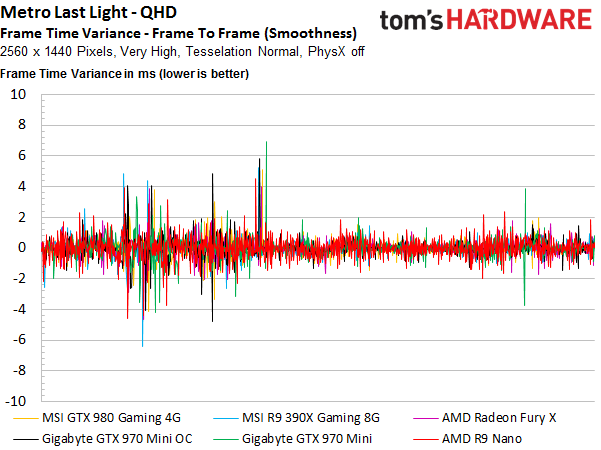
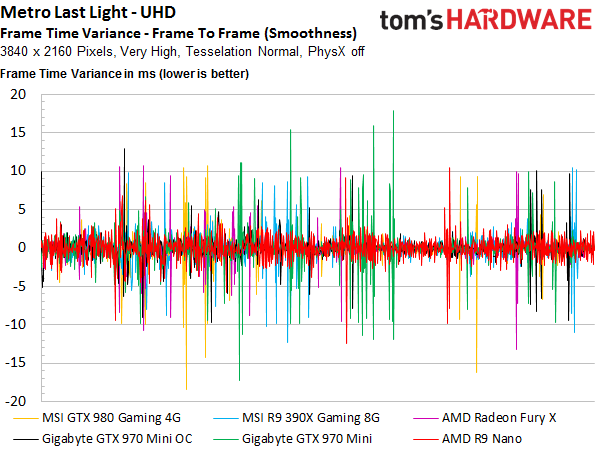
Bioshock Infinite
It’s striking that the factory-overclocked GeForce GTX 980 dominates the Radeon R9 Nano across all resolutions. Even Nvidia’s smaller GeForce 970 Mini (OC) with its 3.5GB of usable graphics memory scores points by leading the Radeon R9 390X and its 8GB of GDDR5 across each resolution, including Ultra HD. By the way, all of the graphics cards we're testing provide playable frame rates at 4K. This is an uncommon and certainly welcome sight.
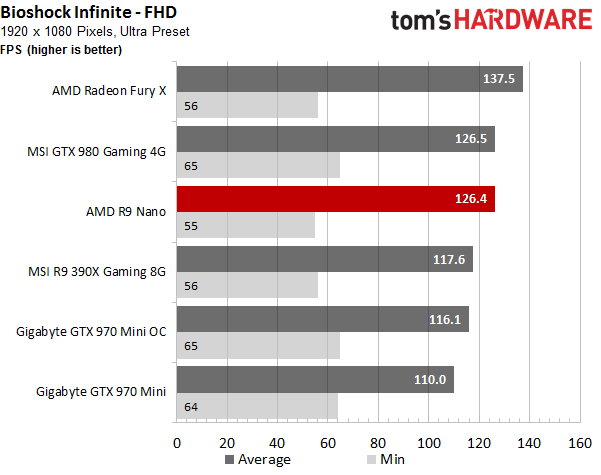
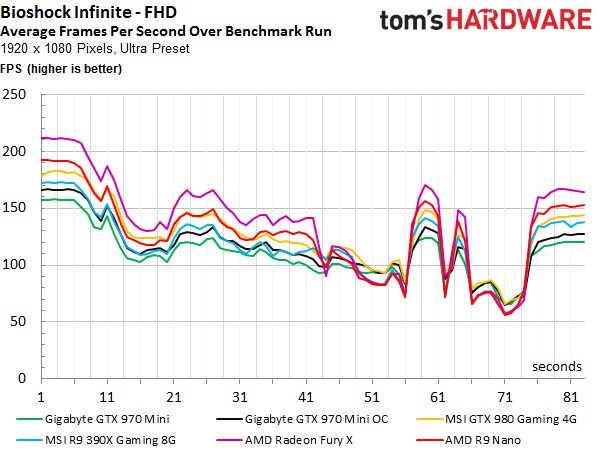
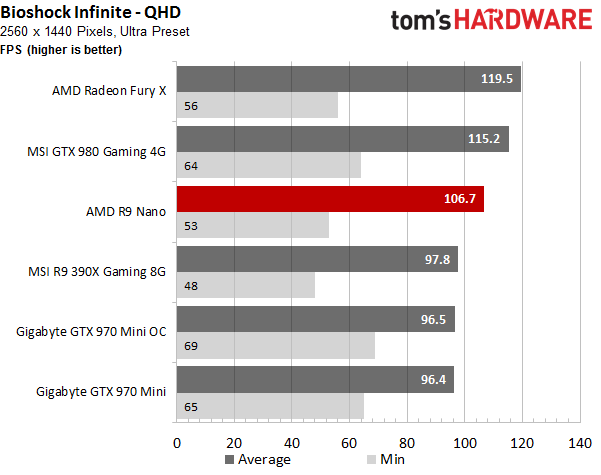

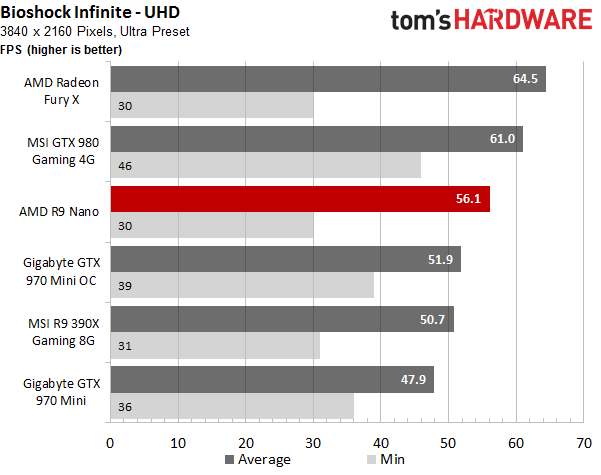
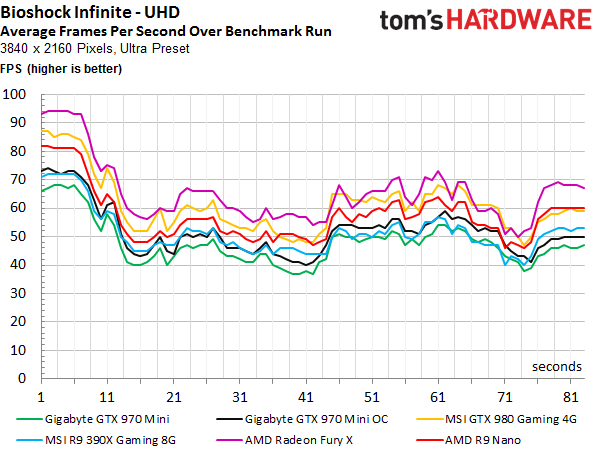
The frame render times don’t show AMD or Nvidia pulling ahead, so the competition ends up fairly balanced. The only exception is AMD's Radeon R9 390X, which shows more spikes overall and gets worse as resolution increases.
Get Tom's Hardware's best news and in-depth reviews, straight to your inbox.
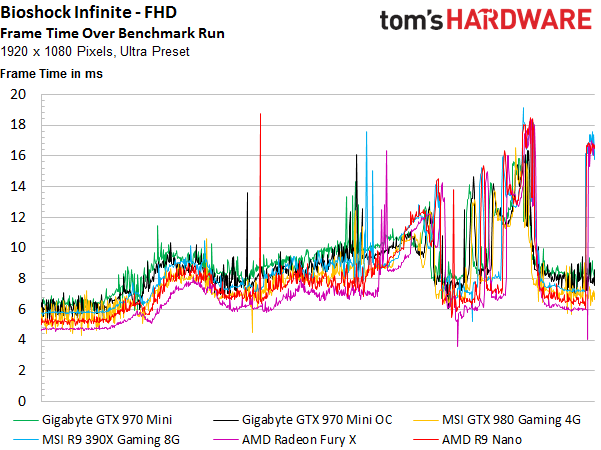
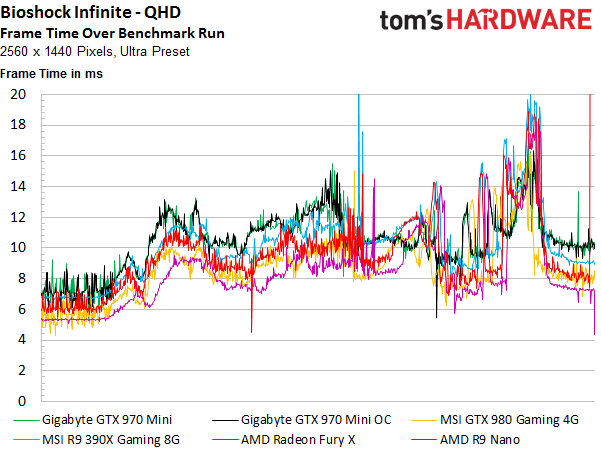

After normalizing the graph with the help of each card’s average frame time, the above observation becomes even easier to see. AMD's boards are worse when it comes to frame render time variance, but the Radeon R9 390X is the only card to do badly enough for it to be perceivable during gameplay.
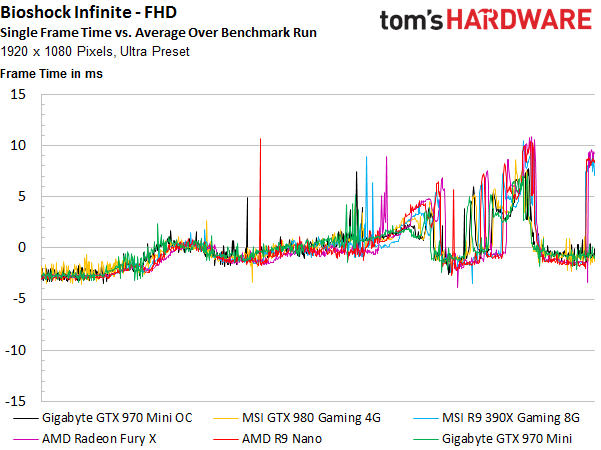
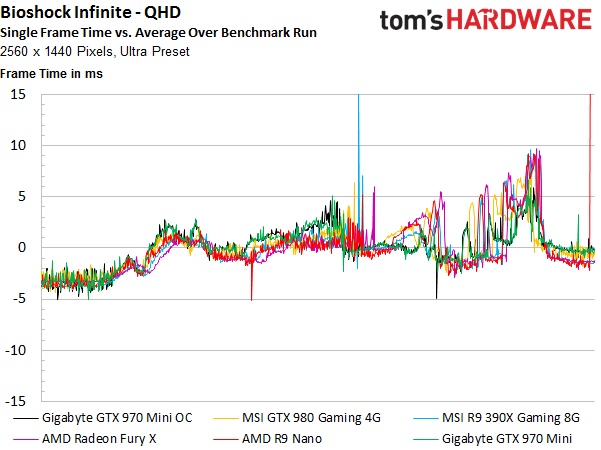
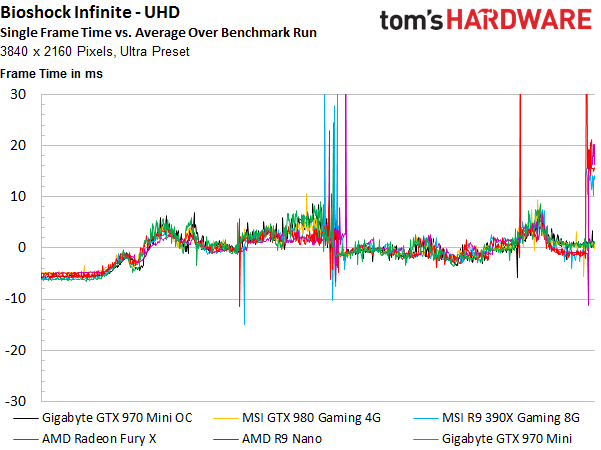
Our smoothness analysis confirms these findings as well. The Radeon R9 390X’s performance is worse in the middle of the benchmark. The culprit is found in the high overclock all the way to 1100MHz. If the clock rate is set to 1000MHz, then frame time variance decreases significantly. We reproduced this behavior in the lab.
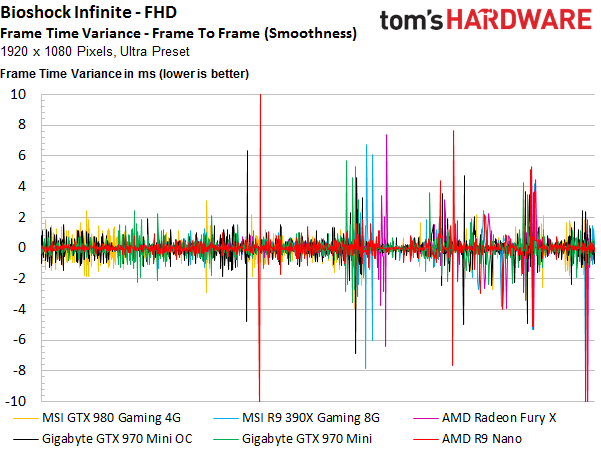
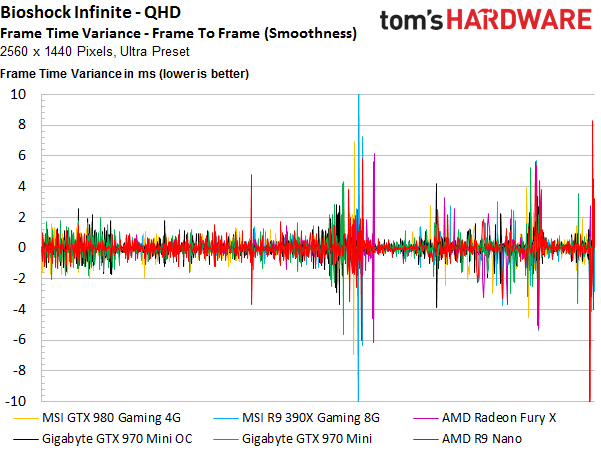

Current page: Results: Metro Last Light And Bioshock Infinite
Prev Page Results: The Witcher 3 And GTA V Next Page Results: Tomb Raider And Battlefield 4
Igor Wallossek wrote a wide variety of hardware articles for Tom's Hardware, with a strong focus on technical analysis and in-depth reviews. His contributions have spanned a broad spectrum of PC components, including GPUs, CPUs, workstations, and PC builds. His insightful articles provide readers with detailed knowledge to make informed decisions in the ever-evolving tech landscape
-
Eximo Looks like the table had a hiccup. GTX970 (OC) is showing a lot of the numbers from the R9-390X, and maybe a few numbers from the 980 column.Reply -
-Fran- It is a nice card and I agree, but... It's not USD $650 nice.Reply
This card is a very tough sell for AMD, specially since ITX cases that can house current long cards are not hard to find or weird enough to make short cards a thing.
It's nice to see it's up there with the GTX970 in terms of efficiency, since HTPCs need that to be viable and the card has no apparent shortcomings from what I could read here.
All in all, it needs to drop a bit in price. It's not "650 nice", but making it "~500 nice" sounds way better. Specially when the 970 mini is at 400.
Cheers! -
sna no HDMI2.0 in itx small system near the 4k TV is unforgivable AMD , what were you thinking?Reply -
sna Reply16605176 said:It is a nice card and I agree, but... It's not USD $650 nice.
This card is a very tough sell for AMD, specially since ITX cases that can house current long cards are not hard to find or weird enough to make short cards a thing.
It's nice to see it's up there with the GTX970 in terms of efficiency, since HTPCs need that to be viable and the card has no apparent shortcomings from what I could read here.
All in all, it needs to drop a bit in price. It's not "650 nice", but making it "~500 nice" sounds way better. Specially when the 970 mini is at 400.
Cheers!
well this card is for the smallest case ... not the easy to find huge long itx case.
I personaly find long itx cases useless ... they are very near to Matx case in size .. and people will pick up MATX ovet ITX any time if the size is the same.
BUT for 170mm long card ? this is a winner.
the only thing killing this product is the lack of HDMI2.0 which is very important for itx .. ITX are the console like PC near the tv.
-
heffeque Replyno HDMI2.0 in itx small system near the 4k TV is unforgivable AMD , what were you thinking?
I guess that they were thinking about DisplayPort? -
Nossy I'd go with the 950 GTX for a mini ITX build for a 1080pgaming/4k video HTPC.Reply
For a $650 bucks video card. I'd go with a 980TI and use a Raven RVZ01 if I want an ITX build with performance.